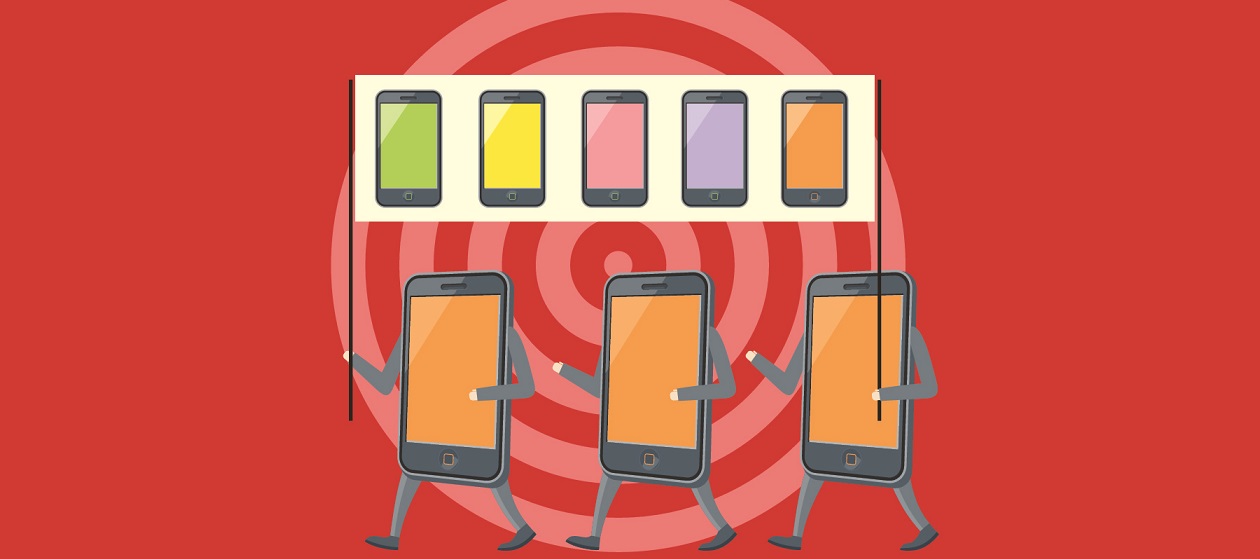I am quite sure you spend more time browsing using your mobile device rather than your personal computer/ laptop. This happens, nowadays, to the majority of internet users in most of the developed countries. Moreover, this trend is likely to increase as processing power, storage capacity and bandwidth availability are increasing at exponential rates, rendering your smart phone (or tablet) your primary computing device. In 2014, we passed the tipping point, where the number of mobile internet users surpassed the respective number of desktop users. This is reported in a recent survey by SmartInsigts, which also found that the majority of internet searches are carried out through mobile devices rather than conventional personal computers and laptops.
As the dominance of mobile computing increases, enterprises can no longer afford to put the design and development of mobile applications at a low priority. On the contrary, mobile application development should be prioritized over conventional web development. This shift in prioritization is commonly known as the “mobile-first” approach.
Mobile-First: A paradigm shift
Mobile-first is not just about enabling access to some services through mobile devices. Rather, it is a paradigm shift, which designs on-line experiences primarily for the majority of mobile users instead of focusing on the base of desktop users. This means, designing your services according to the way mobile users prefer to browse pages, search for information, navigate applications, as well as to the way they pay. That’s completely different from the usual way of doing things, which was: developing a desktop application first and then providing mobile access capabilities.
Application Examples
In order to understand a mobile-first strategy in practice, let’s look at three practical examples:
- Mobile-First Banking: Mobile devices are gradually becoming the primary modality for accessing financial services including personal banking, corporate banking, investment portfolios, trading services and more. A mobile-first strategy serves users who need to access all these services on the move, while at the same time providing them with added-value services such as location-based services and enhanced security and anti-fraud protection services based on the verification of the user’s location. These benefits have also led to the emergence of startup enterprises (such as Tide), which provide mobile-first banking services as a means of accelerating transactions and reducing transaction and agency costs.
- Mobile-First Loyalty Management: Loyalty management is one of the most important segments of customer relationship management, as it aims to strengthen customers’ loyalty by rewarding them for their past purchases. Most enterprises nowadays (notably retailers) implement some short of loyalty management program based on loyalty cards. One of the main problems faced by consumers is the need to carry on a multitude of loyalty cards from different retailers, which if forgotten lead to lost opportunities. To the rescue, mobile first loyalty services can dematerialize and digitize the loyalty card, while at the same time enabling the development of entire marketplaces that aggregate and manage cards from different brands. An example of a promising start-up working in this direction is the Spanish Nokadi.
- Mobile-first marketing: Marketing campaigns are increasingly going mobile through sending messages and offers to the end-users’ mobile devices. Mobile-first marketing is gaining momentum, as several CMOs (Chief Marketing Officers) perceive them as being more effective than traditional campaigns. Indeed, consumers are more likely to act upon the messages they receive in their phones in terms of offers, discount coupons and location-based information, which ultimately yields better conversion rates.
Building your Mobile First Strategy
Here are some tips for developing a mobile-first strategy for your IT-enabled services:
- Mobile first web design: Most web sites are still designed and optimized for desktop rather than for mobile access. This is bound to change as most of the users accessing your site will be mobile. Hence, make sure that you optimize you web site for mobile devices. In case you opt to give equal priority to desktop as well, make sure that your website will be adaptive. Your web pages should automatically adapt to the screen size of the end-users’ terminal, no matter desktop or mobile.
- Mobile User Studies: Human factors, including the way your users access and use a service are always at the heart of an electronic service. When thinking about these ways and running relevant focus groups or co-creation workshops, make sure that you primarily address mobile users requirements. Consider for example how mobile users pay for a transaction using a mobile payment modality such as a Google Wallet or some NFC (Near Field Communications) payment service.
- Keep up with mobile technology state-of-the-art and evolution: Mobile technologies are on the rise and hence various mobile development and deployment frameworks are emerging, including novel technologies such as Apple Siri. Recall also that mobile interactions should be efficient in terms of energy and IT resources, which is a major difference from conventional web applications.
- Consider benefits for employees as well: A mobile first strategy should cover not only the needs of consumers, but also the needs of your employees as well. Take advantage of the mobile characteristics of your IT service in order to maximize the productivity of your employees, through offering them with ubiquitous and instant access to customer records, sales statistics, web analytics and more.
- Branded app: Mobile marketplaces can help you launch mobile IT services with the minimum possible effort and cost. Nevertheless, make sure that you protect your brand, through blending your branding strategy in your mobile first strategy. This may entail developing your own branded apps with special emphasis on your logo, colors, aesthetics and brand image.
Mobile first is the best preparation for the world of ever-increasing mobile devices and it also helps you save money and increase your reach. We hope that our tips could help you start on the right foot and give your audience the best user experience possible.










